Successful Demonstration Test of World’s First* Zero-Emission ShipThe Nippon Foundation Zero Emission Ships Project expected to promote carbon neutrality in shipping sector
A zero-emission ship demonstration test was successfully conducted from March 26 to April 4, 2024, at the Port of Kokura, Kitakyushu, using the hydrogen fuel-cell-powered crew transfer vessel (CTV) HANARIA, with zero CO2 emissions. This test was part of the Zero Emission Ships Project, which The Nippon Foundation has spearheaded since 2022. HANARIA achieved the world’s first operation of a hydrogen fuel-cell-powered offshore wind turbine CTV with zero CO2 emissions. It is the first hydrogen fuel-cell-powered ship of more than 20 gross tonnage in Japan.
Aiming for the reduction of CO2 emissions from coastal shipping, which accounts for 5% of the Japanese transport sector’s CO2 emissions, to zero by 2050, The Nippon Foundation is promoting the development of zero-emission shipping technology in Japan. This project reflects the Foundation’s policy of passing on the ocean’s riches to future generations, and will contribute significantly toward the goal of achieving a carbon-neutral society by 2050.
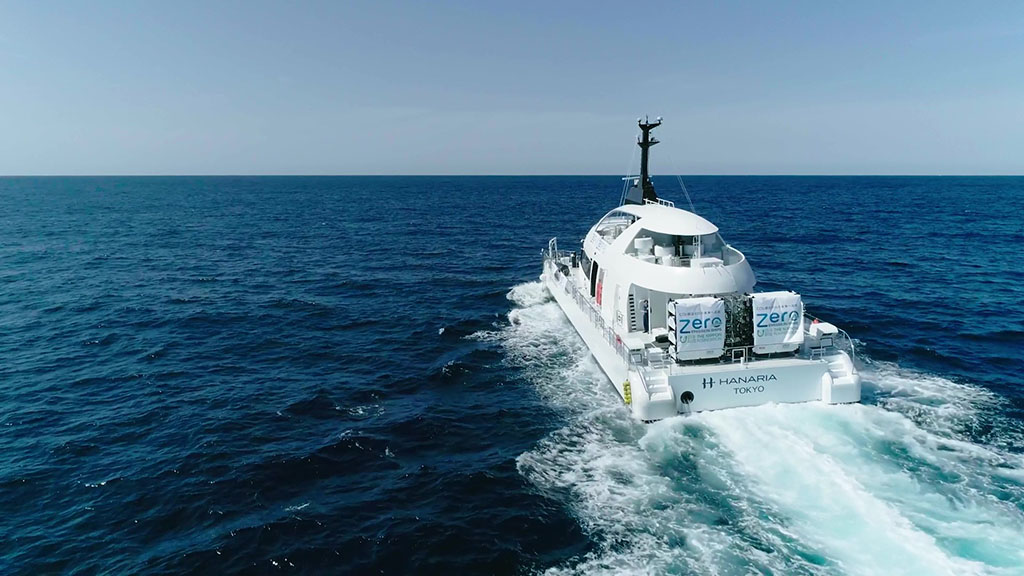
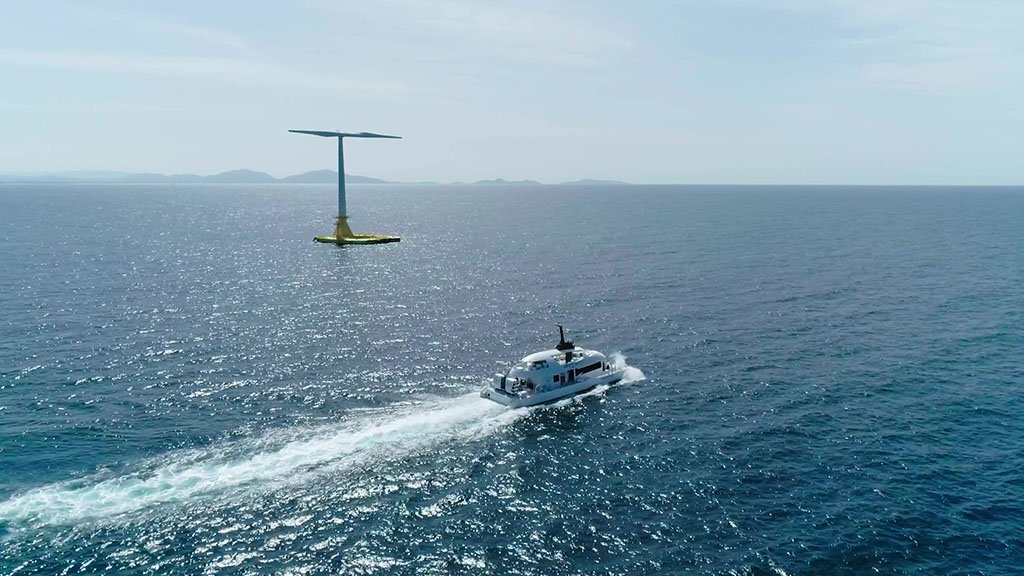
Zero-emission ships that do not emit CO2 are next-generation vessels that are seen making a major contribution to the realization of a carbon-neutral society, which is a pressing issue worldwide, while making use of Japan’s world-leading hydrogen and engine technologies.
The Zero Emission Ships Project, promoted by the Nippon Foundation, has been developing the world’s first hydrogen-fueled ships (zero-emission ships) since January 2022. Of the three private-sector consortia involved in the project, HANARIA is the first demonstration test to be completed.
- * According to The Nippon Foundation’s research (as of March 2024), this was the “world’s first” zero-emission demonstration of a CTV equipped with hydrogen fuel cells.
Outline of the demonstration
| Outline | The consortium conducted a zero-emission round trip of approximately 30 kilometers between the Port of Kokura and the Shirashima Offshore Wind Farm with the passenger ship HANARIA (33 meters, 248 gross tons) equipped with a hydrogen fuel system. HANARIA is expected to be used for transporting personnel to the offshore wind farm and for site tours. The vessel demonstrated zero CO2 emissions using hydrogen fuel from its departure to return arrival. |
|---|---|
| Participating entities | MOTENA-Sea (project leader), Mitsui O.S.K. Techno-Trade (business development), Hongawara Shipyard (vessel design and construction), Kanmon Line (operation), Taiyo Nippon Sanso Corp. (hydrogen supply/procurement) |
| Demonstration route | Round trip between the Port of Kokura and a wind farm off Shirashima Island |
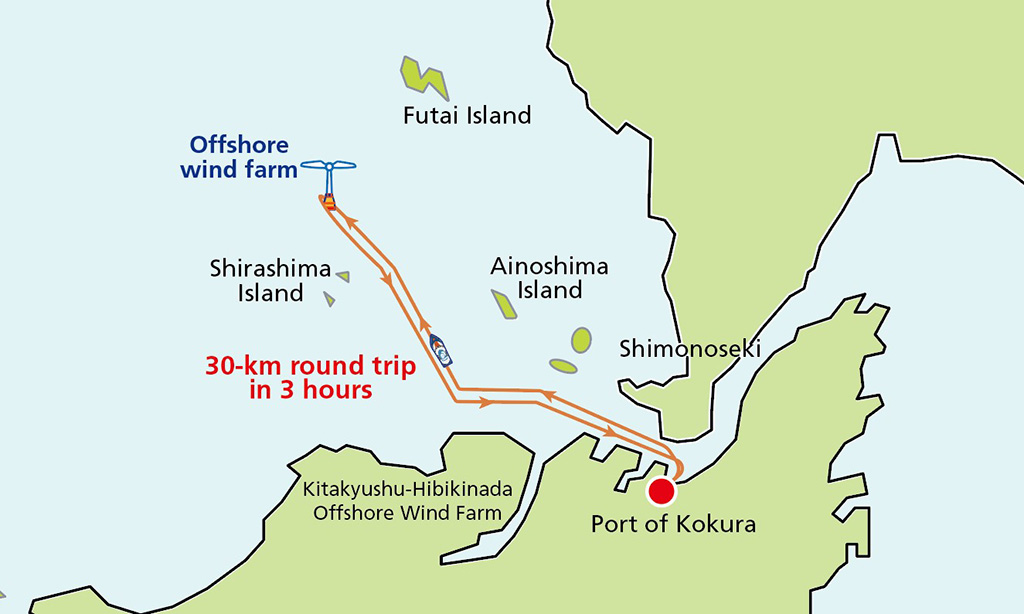
Background of the project and carbon-neutrality initiatives in the shipping sector
Of Japan’s 2019 CO2 emissions, 206 million tons (18.6% of the total) were generated by the transport sector, of which approximately 10.25 million tons (5% of the total) were from coastal shipping.*1
The Paris Agreement, adopted in 2015 at the United Nations Climate Change Conference (COP 21) in Paris, accelerated the global move toward decarbonization. In July 2023, the International Maritime Organization (IMO) adopted a strategy to reach net-zero greenhouse gas (GHG) emissions from international shipping by or around 2050.
In Japan, then-Prime Minister Yoshihide Suga mentioned a “virtuous circle” between the economy and the environment as a pillar of his growth strategy in his first policy speech in October 2020. At that time, he declared that Japan aims to achieve “virtually zero” GHG emissions by 2050 and become a carbon-neutral society.
The shipping sector therefore needs to promote policies to reduce CO2 emissions from coastal shipping to zero by 2050. One of the measures to achieve this is the conversion to carbon-free, next-generation fuels (the introduction of next-generation-fuel ships), which is one of the 14 areas of the “Green Growth Strategy Through Achieving Carbon Neutrality in 2050,” and is included in the action plan for the shipping industry.
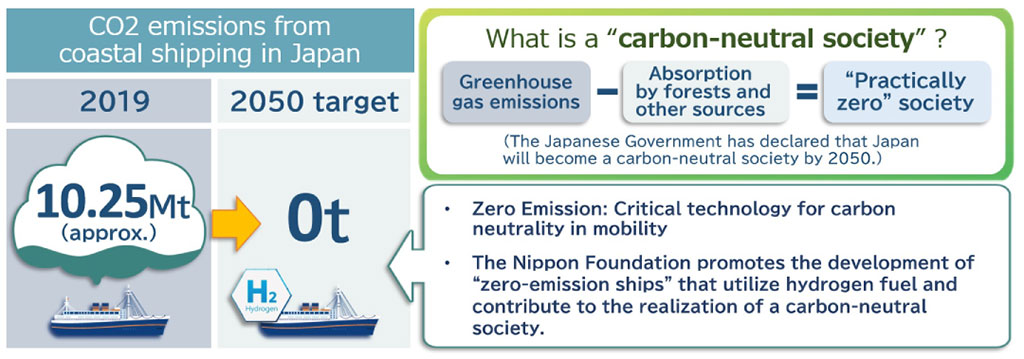
- * 1. Maritime Bureau, Ministry of Land, Infrastructure, Transport and Tourism, “Study Group for the Promotion of Carbon Neutrality in Coastal Shipping” (2021)
Upcoming demonstrations
Zero-emission vessels equipped with hydrogen-only combustion engines are being developed with demonstrations planned for fiscal 2026.
| 【This demonstration】 Hydrogen Fuel Cell CTV Consortium |
【FY2026】 Hydrogen Engine Zero Emission Vessels Consortium |
【FY2026】 Hydrogen-Engine Tanker Consortium |
|---|---|---|
| MOTENA-Sea and 4 other companies | JPN H₂YDRO and 11 other companies | YANMAR POWER TECHNOLOGY and 5 other companies |
Demonstration of zero-emission operation of CTV equipped with hydrogen fuel cells
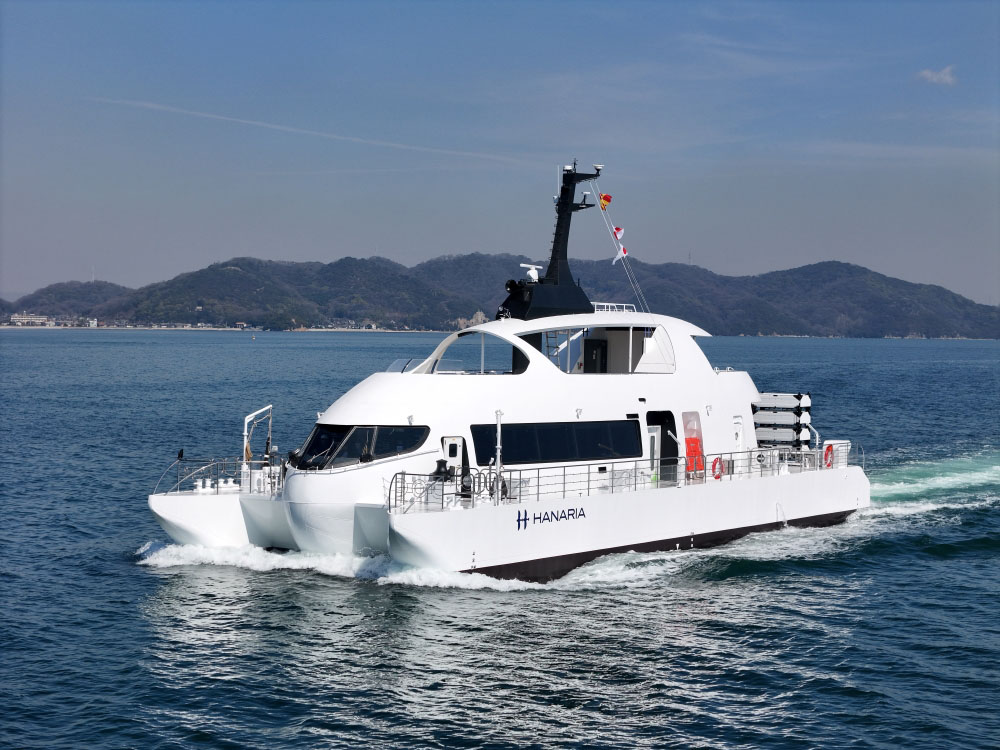 |
Demonstration and operation of passenger vessel equipped with hydrogen-fueled-combustion engine and development
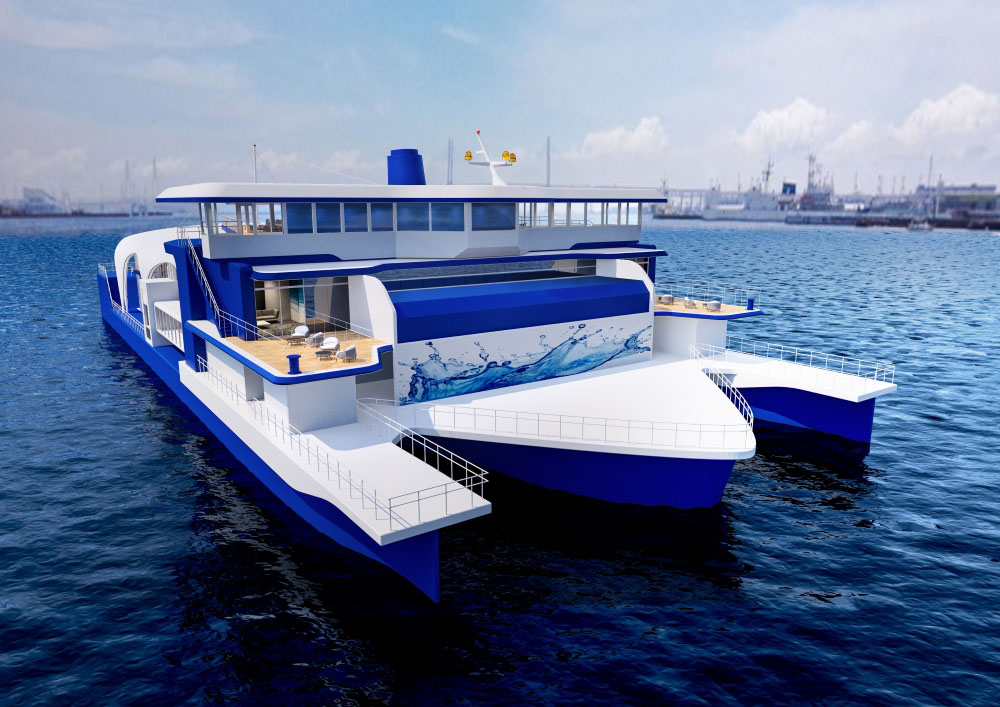 |
Demonstration of zero-emission operation by tanker equipped with hydrogen combustion engine
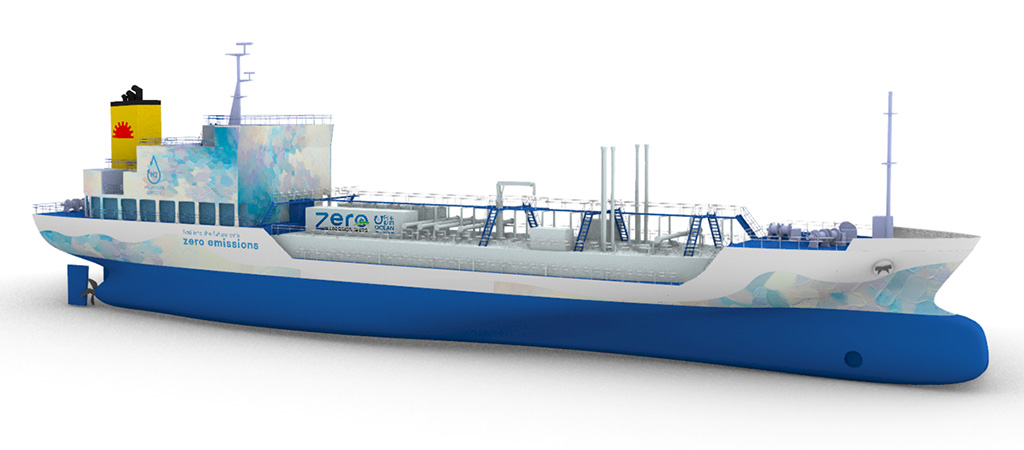
|
Comments
Mitsuyuki Unno (Executive Director, The Nippon Foundation)
Zero-emission ships that do not emit CO2 are the trump card for realizing a carbon-neutral society in 2050. With Japan’s advanced technological capabilities, we hope to lead the world’s ships to zero emissions.
Kazutoshi Takao (President, MOTENA-Sea, Ltd.)
HANARIA is a pioneer in the construction of zero-emission ships using hydrogen energy for realizing a carbon-neutral society in 2050. We hope that many people will enjoy the zero-emission experience with HANARIA.
Yoshihiko Hamamura (Toyota Motor Corporation,* Hydrogen Factory, Chief Project Leader)
I would like to express my respect for the enthusiasm of all those involved in this project who proactively took on the challenge of commercial operation as well as demonstration testing. The realization of a hydrogen society requires not only technological development, but also city and social design, and we look forward to moving ahead with all parties involved.
- * Toyota Motor Corp. cooperated in the development of the hydrogen tanks used for this vessel.
Kazuhisa Takeuchi (Mayor of Kitakyushu City)
We would like to express our deepest gratitude for having HANARIA choose Kitakyushu City as its demonstration test site. Kitakyushu City will continue to work on the promotion of hydrogen from both the supply and demand perspectives, aiming to realize a “Zero Carbon City by 2050” and to “Strengthen the competitiveness of businesses.”
The Nippon Foundation Zero Emission Ships Project: Developing the ships of the future with zero greenhouse gas emissions
The Nippon Foundation has been carrying out the Zero Emission Ships Project since January 2022. The project aims to develop and demonstrate the world’s first hydrogen-fueled ships (zero-emission ships) to contribute to the achievement of carbon neutrality in the coastal shipping sector by 2050.
The project plans to carry out demonstration tests in collaboration with three private-sector consortia by the end of fiscal 2026 (March 2027).
The development of zero-emission ships is not only expected to strongly promote the realization of carbon neutrality, which is a pressing issue worldwide, but also to become a “future industry” that can utilize Japan’s world-class hydrogen and engine technologies.
Contact
Public Relations Team
The Nippon Foundation
- Email: cc@ps.nippon-foundation.or.jp



